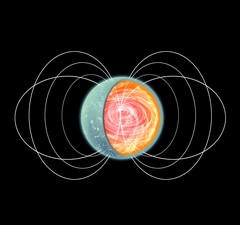Podcaster: Pamela Quevillon
Title: A Flare for the Dramatic
Organization: Speak Easy Narration
Link : http://speakeasynarration.com ; http://www.unawe.org/kids/unawe1338/
Description: Space scoop, news for children. Today’s we bring you a double feature, discussing Hubble’s eye on the sky and our search for worlds orbiting other stars.
Bio: Pamela Quevillon is a voice actress who most often lends her voice to science and science fiction content. You can find her work on the “Escape Pod” and “365 Days of Astronomy”, as well as on her site
Today’s sponsor: This episode of “365 Days of Astronomy” is sponsored by — no one. We still need sponsors for many days in 2013, so please consider sponsoring a day or two. Just click on the “Donate” button on the lower left side of this webpage, or contact us at signup@365daysofastronomy.org.
Transcript:
When a massive star comes to the end of its life it doesn’t quietly burn out like a dying candle. Instead, it goes out with a bang, or rather an explosion that outshines almost everything else in the Universe! This explosion is called a supernova, and when this happens, the star is torn apart, throwing material into space. But something is left behind — a ‘neutron star’ — the remaining core of a massive star once it has exploded.
This picture might look like a jawbreaker that’s been dipped in dental floss, but it actually shows an artist’s impression of a very exotic type of neutron star called a “magnetar”.
Magnetars are some of the most extreme objects known in the Universe. They are a very small and ultra-compact type of neutron star that erupt randomly with bursts of powerful high-energy flares. These stars were given their name because they are very strong magnets. You’ve probably played with magnets in school and know that magnets attract materials like iron.
Magnetars are notoriously strong magnets – the strongest in the entire Universe, in fact! Well, except for this one. This picture shows “SGR 0418”, a magnetar that doesn’t fit the mould. It is a much weaker magnet than any other star of its kind.
What makes this really puzzling is that it raises the question: where does the energy come from to power its dramatic high-energy flares? Until now astronomers thought the strong magnets powered the flares . But this theory doesn’t work for SGR 0418! This star appears to be an oddity amongst oddities!
Cool Fact: Guess what? The Earth is a giant magnet, too! Although nowhere near as strong as a magnetar, it is still strong enough to protects us from harmful radiation sent from the Sun, and it causes the beautiful Northern Lights!
365 Days of Astronomy is a community podcast made possible thanks to the contributions of people like you. Please consider donating at 365DaysofAstronomy.org/Donate
End of podcast:
365 Days of Astronomy
=====================
The 365 Days of Astronomy Podcast is produced by the New Media Working Group of the International Year of Astronomy 2009. Audio post-production by Preston Gibson. Bandwidth donated by libsyn.com and wizzard media. Web design by Clockwork Active Media Systems. You may reproduce and distribute this audio for non-commercial purposes. Please consider supporting the podcast with a few dollars (or Euros!). Visit us on the web at 365DaysOfAstronomy.org or email us at info@365DaysOfAstronomy.org. In the new year the 365 Days of Astronomy project will be something different than before….Until then…goodbye.


